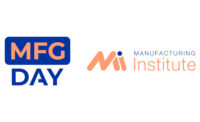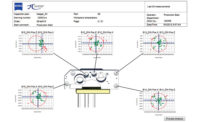CHICAGO-Prime Advantage, the leading buying consortium for midsized industrial manufacturers, announced the results of its sixth Prime Advantage Group Outlook (GO) Survey, revealing the top economic concerns of midsized industrial manufacturers for 2010. The study results indicate that the sense of confidence which returned to small and midsized industrial manufacturers at the beginning of the year is giving way to some uncertainty mid-year, in terms of expectations for revenue and customer demand.
Among the highlights of the survey findings, 36 percent of respondents indicated that they expected revenues to increase for the second half of 2010, which is nearly identical to the survey results from 12 months ago, when 37 percent of respondents predicted that revenues would increase for the remainder of 2009. Eighteen percent predict revenues will decrease over the next six months, compared to 11 percent in the last GO Survey, which was conducted in February 2010.
The latest survey data was collected in August from 53 representatives of industrial manufacturing companies, including business owners, vice presidents of procurement and senior purchasing professionals. The survey polled respondents on their projections for the next six months of the year, often in comparison to the past six months.
“While it seems that the boost enjoyed from inventory replenishment efforts is close to ending, small and midsized manufacturers will continue to be challenged by the ability to carefully manage customer demand, and then match that with throughput and hiring decisions,” said Louise O’Sullivan, president and founder of Prime Advantage. “As lead times grow, having key relationships with suppliers through Prime Advantage will better ensure consistent supply and will also enable these manufacturers to control costs while rapidly and efficiently responding to new demand.”
Economic Outlook
Forty-five percent of respondents said they expect revenues to stay the same for the second half of 2010, a slight uptick from February’s survey when 43 percent estimated no new growth in the immediate future, but still well off the 2009 Mid-Year GO Survey, when 55 percent predicted no new growth. Also, 20 percent predicted a decrease in capital spending from the first half of 2010.
This reflects other manufacturing indicators, such as the August Purchasing Managers’ Index, which showed that manufacturing grew in the U.S. for the 13th consecutive month, while indicating that new orders were growing at a slower rate. The Federal Reserve’s latest Beige Book report also showed manufacturing maintaining a modest growth pace.
Capital spending expectations also declined slightly, with a still healthy 31 percent of respondents predicting an increase from the first half of 2010. In February, 34 percent of respondents predicted an increase from 2009 spending levels. Yet a sense of optimism is still clearly present among small and midsized industrial manufacturers as compared to last year, when just 14 percent predicted an increase in capital spending over the levels set in the first half of 2009, and 31 percent predicted a decrease in spending from 2009 levels.
Top sourcing concerns for 2010 are the ability to manage costs of raw materials, with 63 percent in agreement, followed by the costs of components, with 45 percent in agreement. This is a departure from the past two surveys, when at least 36 percent of manufacturers cited the ability to focus on business process issues, such as cost savings and efficiency measurement.
Several new questions were added to the survey, including questions about supply chain disruptions and delays in supply networks over the past six months. Forty-nine percent of respondents indicated that they had experienced supply chain disruptions since the beginning of 2010, while 78 percent said they had experienced some type of increase in lead times from their supply networks and 40 percent agreed that they had experienced at least two-week increases in lead times from suppliers over the past six months.
Prime Advantage members were also asked whether passage of the recent Miscellaneous Tariff Bill, which is designed to temporarily suspend or reduce tariffs and duties on a number of imported raw materials, was important to their companies. Forty-one percent responded that it was somewhat important, while 57 percent said it does not help their companies.
Employment Outlook is Optimistic
Among the highlights of the survey findings, 36 percent of respondents indicated that they expected revenues to increase for the second half of 2010, which is nearly identical to the survey results from 12 months ago, when 37 percent of respondents predicted that revenues would increase for the remainder of 2009. Eighteen percent predict revenues will decrease over the next six months, compared to 11 percent in the last GO Survey, which was conducted in February 2010.
The latest survey data was collected in August from 53 representatives of industrial manufacturing companies, including business owners, vice presidents of procurement and senior purchasing professionals. The survey polled respondents on their projections for the next six months of the year, often in comparison to the past six months.
“While it seems that the boost enjoyed from inventory replenishment efforts is close to ending, small and midsized manufacturers will continue to be challenged by the ability to carefully manage customer demand, and then match that with throughput and hiring decisions,” said Louise O’Sullivan, president and founder of Prime Advantage. “As lead times grow, having key relationships with suppliers through Prime Advantage will better ensure consistent supply and will also enable these manufacturers to control costs while rapidly and efficiently responding to new demand.”
Economic Outlook
Forty-five percent of respondents said they expect revenues to stay the same for the second half of 2010, a slight uptick from February’s survey when 43 percent estimated no new growth in the immediate future, but still well off the 2009 Mid-Year GO Survey, when 55 percent predicted no new growth. Also, 20 percent predicted a decrease in capital spending from the first half of 2010.
This reflects other manufacturing indicators, such as the August Purchasing Managers’ Index, which showed that manufacturing grew in the U.S. for the 13th consecutive month, while indicating that new orders were growing at a slower rate. The Federal Reserve’s latest Beige Book report also showed manufacturing maintaining a modest growth pace.
Capital spending expectations also declined slightly, with a still healthy 31 percent of respondents predicting an increase from the first half of 2010. In February, 34 percent of respondents predicted an increase from 2009 spending levels. Yet a sense of optimism is still clearly present among small and midsized industrial manufacturers as compared to last year, when just 14 percent predicted an increase in capital spending over the levels set in the first half of 2009, and 31 percent predicted a decrease in spending from 2009 levels.
Top sourcing concerns for 2010 are the ability to manage costs of raw materials, with 63 percent in agreement, followed by the costs of components, with 45 percent in agreement. This is a departure from the past two surveys, when at least 36 percent of manufacturers cited the ability to focus on business process issues, such as cost savings and efficiency measurement.
Several new questions were added to the survey, including questions about supply chain disruptions and delays in supply networks over the past six months. Forty-nine percent of respondents indicated that they had experienced supply chain disruptions since the beginning of 2010, while 78 percent said they had experienced some type of increase in lead times from their supply networks and 40 percent agreed that they had experienced at least two-week increases in lead times from suppliers over the past six months.
Prime Advantage members were also asked whether passage of the recent Miscellaneous Tariff Bill, which is designed to temporarily suspend or reduce tariffs and duties on a number of imported raw materials, was important to their companies. Forty-one percent responded that it was somewhat important, while 57 percent said it does not help their companies.
Employment Outlook is Optimistic
Asked to look at their own employment projections for the next six months, 62 percent of respondents indicated that employment would stay the same as the first half of 2010, while 32 percent indicated that they expect more hiring in 2010. Just six percent indicated that they were planning layoffs by year-end. This optimism compares favorably to data from the July KPMG survey of U.S. manufacturing executives, in which more than 40 percent indicated that employment in their companies would rise in the next year.
Top Expected Cost Pressures for 2010
Top Expected Cost Pressures for 2010
As with every previous GO Survey, raw material costs (such as metals and plastics) remain the top cost pressure concern, as cited by 51 percent, an increase from 36 percent in February. However, this number is still below earlier surveys, when 53 percent (September 2009) 67 percent (February 2009) and 93 percent (July 2008) mentioned it as the top cost pressure concern.
Logistics and supply chain costs were cited as the second greatest concern, at 24 percent, followed by health care costs, at 14 percent.
Also, while 78 percent of respondents reported that their own organizations had not been affected by the cost or availability of credit, the same percentage said that their customers had been either somewhat (55 percent) or very much (22 percent) affected by the cost or availability of credit.
Off-Shore Manufacturing Trends
Logistics and supply chain costs were cited as the second greatest concern, at 24 percent, followed by health care costs, at 14 percent.
Also, while 78 percent of respondents reported that their own organizations had not been affected by the cost or availability of credit, the same percentage said that their customers had been either somewhat (55 percent) or very much (22 percent) affected by the cost or availability of credit.
Off-Shore Manufacturing Trends
For the first time, Prime Advantage asked its members whether their companies would bring any off-shore manufacturing back to North America, either domestically or to Mexico, in the near future. Just eight percent said they were either migrating plants back to the U.S. or Mexico, or else considering the move in the next 12-24 months. Thirty-one percent said they were adding more off-shore plants, while 61 percent said they intended to maintain domestic manufacturing capabilities.
Not Aware or Convinced of Cloud Computing Benefits
Not Aware or Convinced of Cloud Computing Benefits
Forty-eight percent of respondents indicated that they did not plan to change their current supply chain information management processes within the next 12 months, while 42 percent said they were unaware of any “cloud”-based, or Internet-based, technology solutions they could consider as an alternative to their current solutions.
Methodology: In August, Prime Advantage surveyed executives and purchasing professionals that represent durable goods manufacturing firms, with annual revenues ranging between $10 million and $10 billion, of which the majority ranges between $20 million and $500 million. The survey received a 10 percent response rate from 528 top professionals representing U.S.-based manufacturers in more than 25 different industries, including commercial foodservice, packaging, truck and trailer, material handling, food processing and construction.
Methodology: In August, Prime Advantage surveyed executives and purchasing professionals that represent durable goods manufacturing firms, with annual revenues ranging between $10 million and $10 billion, of which the majority ranges between $20 million and $500 million. The survey received a 10 percent response rate from 528 top professionals representing U.S.-based manufacturers in more than 25 different industries, including commercial foodservice, packaging, truck and trailer, material handling, food processing and construction.


